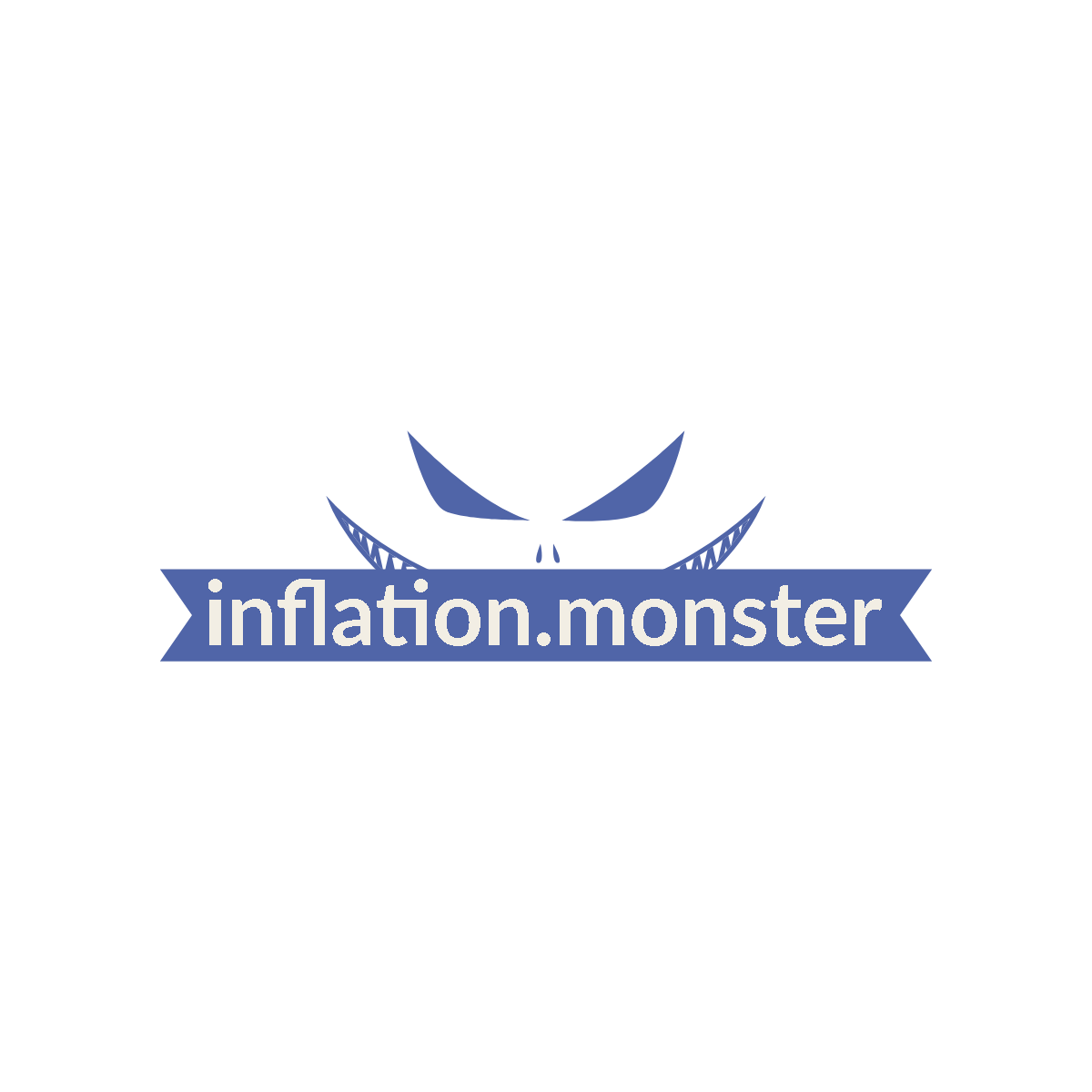Inflation can be a tricky creature to understand, but here at Inflation.Monster, we’re dedicated to shedding light on its complex realm and its impact on money and economics. In this article, we explore the crucial role of fiscal policy in influencing inflation. We’ll dive into the intricacies of how government spending, taxation, and overall economic management can either fuel or tame the inflation monster. So, fasten your seatbelts as we embark on a journey to unravel the mysteries of inflation and equip you with the knowledge to navigate the ever-changing financial landscape.

Understanding Inflation
Inflation is a phenomenon characterized by a sustained increase in the overall price level of goods and services in an economy over a period of time. It is often measured by the annual rate of change in the Consumer Price Index (CPI). When inflation occurs, each unit of currency buys fewer goods and services, leading to a decrease in the purchasing power of money. Inflation can have a significant impact on individuals, businesses, and the economy as a whole.
Causes of Inflation
There are several causes of inflation, including:
-
Demand-Pull Inflation: This type of inflation occurs when the aggregate demand for goods and services exceeds the available supply. As demand increases, prices rise due to the scarcity of resources.
-
Cost-Push Inflation: Cost-push inflation occurs when the prices of production inputs, such as labor and raw materials, increase. These higher costs are then passed on to consumers, leading to inflation.
-
Built-In Inflation: Built-in inflation is caused by anticipation of future price increases. When wages and prices rise in response to past inflation, it creates a cycle of continuously increasing prices.
-
Monetary Inflation: Monetary inflation is caused by an increase in the money supply in the economy. When there is more money available, individuals have more purchasing power, which can drive up demand and prices.
Types of Inflation
Inflation can also be categorized into different types:
-
Mild Inflation: Mild inflation refers to a low and manageable increase in prices, typically within a single-digit percentage range. This type of inflation is often considered to be healthy for an economy as it indicates economic growth.
-
Hyperinflation: Hyperinflation is an extreme form of inflation characterized by rapid and out-of-control price increases. This type of inflation can have severe economic consequences, including a loss of confidence in the currency and a breakdown of the economy.
-
Deflation: Deflation is the opposite of inflation and occurs when the overall price level of goods and services decreases. While deflation may initially seem beneficial, as it increases the purchasing power of money, it can lead to a downward spiral of reduced spending and economic stagnation.
Effects of Inflation
Inflation can have both positive and negative effects on an economy. Some of the effects of inflation include:
-
Reduced Purchasing Power: As the general price level rises, the purchasing power of money decreases. This means that individuals and businesses need to spend more to purchase the same goods and services.
-
Redistribution of Wealth: Inflation can lead to a redistribution of wealth from savers to borrowers. Those holding assets that do not increase in value with inflation, such as cash or fixed-rate bonds, will experience a decrease in real wealth.
-
Uncertainty and Risk: Inflation can create uncertainty and increase risk within an economy. Businesses and individuals may struggle to plan for the future as they navigate fluctuating prices and costs.
-
Economic Stimulus: Inflation can stimulate economic activity, as individuals and businesses may be incentivized to spend and invest rather than hold onto cash. This can lead to increased production and job creation.
-
International Competitiveness: If a country experiences higher inflation than its trading partners, its goods and services may become more expensive relative to those of other countries. This can negatively impact exports and international competitiveness.
Understanding the causes, types, and effects of inflation is crucial when exploring the relationship between inflation and fiscal policy.
Fiscal Policy
Fiscal policy refers to government actions related to taxation and spending with the aim of influencing the economy. It involves decisions about how the government collects revenue and how it allocates and manages public expenditures. Fiscal policy is an important tool in macroeconomic management and can be used to stabilize or stimulate an economy.
Objectives of Fiscal Policy
The objectives of fiscal policy can vary depending on the economic conditions and priorities of a country. Some common objectives include:
-
Economic Stability: Fiscal policy can be used to promote stable economic growth, control inflation, and reduce unemployment rates by adjusting taxation and government spending.
-
Income Redistribution: Fiscal policy can also be used to promote income redistribution by implementing progressive taxation and providing social welfare programs.
-
Public Goods and Services: Fiscal policy enables governments to provide public goods and services, such as infrastructure, healthcare, and education, which contribute to the overall well-being of society.
Types of Fiscal Policy
There are two main types of fiscal policy:
-
Expansionary Fiscal Policy: This type of fiscal policy involves increasing government spending and/or reducing taxes to stimulate economic growth and increase aggregate demand. Expansionary fiscal policy is typically used during economic downturns or recessions to boost investment and consumer spending.
-
Contractionary Fiscal Policy: Contractionary fiscal policy involves reducing government spending and/or increasing taxes to cool down an overheating economy. This policy is used when there is excessive inflation or when the economy is growing at an unsustainable rate.
The Relationship Between Inflation and Fiscal Policy
Fiscal policy plays a significant role in combating inflation and managing its impact on the economy. It can influence the overall price level and inflationary pressures through its impact on aggregate demand and the money supply. The relationship between inflation and fiscal policy can be both positive and negative, depending on the specific measures implemented.
Role of fiscal policy in combating inflation
Fiscal policy can be used as a tool to control inflation by managing aggregate demand and the money supply. When there is excess demand in the economy, fiscal policy can be used to reduce it, thus curbing inflationary pressures. This can be achieved through measures such as increasing taxes, reducing government spending, or implementing fiscal rules that limit budget deficits.
Positive relationship between fiscal policy and inflation
In some cases, fiscal policy measures can inadvertently contribute to inflation. Expansionary fiscal policies, such as increased government spending or tax cuts, can lead to an increase in aggregate demand, resulting in upward pressure on prices. This positive relationship between fiscal policy and inflation highlights the importance of carefully designing and implementing fiscal measures to avoid unintended inflationary consequences.
Negative relationship between fiscal policy and inflation
Contractionary fiscal policies, on the other hand, can have a negative relationship with inflation. By reducing government spending and increasing taxes, these policies aim to dampen aggregate demand and restrain inflation. When implemented effectively, contractionary fiscal policies can help control inflation and stabilize the economy.
Expansionary Fiscal Policy and Inflation
Expansionary fiscal policy refers to the use of government spending and tax cuts to stimulate economic growth and increase aggregate demand. This policy is typically implemented during periods of economic downturn or recession when there is a need to boost economic activity. However, expansionary fiscal policy can also have inflationary implications.
Impact of expansionary fiscal policy on inflation
Expansionary fiscal policy can lead to inflation primarily through its impact on aggregate demand. When government spending increases or taxes are cut, households and businesses have more disposable income, which can result in increased consumer spending and investment. This increased demand for goods and services can push up prices and lead to inflationary pressures.
Tools used in expansionary fiscal policy
There are several tools that can be used in expansionary fiscal policy:
-
Government Spending: Increased government spending on infrastructure, public projects, or social programs can stimulate economic activity by creating jobs and increasing demand for goods and services.
-
Tax Cuts: Reducing taxes, such as income or corporate taxes, can put more money into the pockets of individuals and businesses, promoting consumer spending and investment.
-
Transfer Payments: Transfer payments, such as unemployment benefits or social assistance, can provide additional income to individuals and stimulate consumer spending.

Contractionary Fiscal Policy and Inflation
Contractionary fiscal policy involves reducing government spending and increasing taxes to cool down an overheating economy and control inflation. This policy is typically implemented when there is excessive inflation or when the economy is growing at an unsustainable rate.
Impact of contractionary fiscal policy on inflation
Contractionary fiscal policy measures, such as reducing government spending or increasing taxes, aim to reduce aggregate demand and restrain inflationary pressures. By reducing the amount of money available in the economy, contractionary fiscal policy can help curb inflation and bring prices back under control.
Tools used in contractionary fiscal policy
Some common tools used in contractionary fiscal policy include:
-
Government Spending Cuts: Decreasing government spending on public projects, infrastructure, or social programs can reduce aggregate demand and help lower inflationary pressures.
-
Tax Increases: Raising taxes, such as income or consumption taxes, can reduce disposable income and consumer spending, thereby curbing inflation.
-
Austerity Measures: Austerity measures involve reducing government spending across the board to achieve fiscal discipline and control inflation. These measures often include cuts to public sector wages, benefits, and subsidies.
Monetary Policy and Its Influence on Inflation
Monetary policy refers to the actions taken by a central bank to manage the money supply and interest rates in order to achieve macroeconomic objectives. It is primarily focused on controlling inflation, maintaining price stability, and supporting economic growth. While fiscal policy and monetary policy are distinct, they both play a crucial role in managing inflation.
Definition of monetary policy
Monetary policy involves the regulation of the money supply and interest rates by the central bank. It aims to influence borrowing costs, credit availability, and spending in the economy to achieve desired economic outcomes.
Role of monetary policy in inflation control
Monetary policy can have a significant impact on inflation as it directly affects the money supply and interest rates. By adjusting interest rates and employing various monetary tools, central banks can influence borrowing costs and credit availability, which in turn affects consumer spending, investment, and ultimately, inflation.
Comparison between fiscal and monetary policy
While both fiscal and monetary policy can be used to manage inflation, they are distinct in their approaches and mechanisms. Fiscal policy involves changes in government spending and taxation, while monetary policy focuses on regulating the money supply and interest rates. While fiscal policy is primarily controlled by the government, monetary policy is typically guided by an independent central bank.

Factors Influencing the Effectiveness of Fiscal Policy on Inflation
The effectiveness of fiscal policy in controlling inflation can be influenced by various factors. These factors can shape the outcomes and impact of fiscal policy measures on the overall economy.
Political environment
The political environment can have a significant impact on the effectiveness of fiscal policy in controlling inflation. Political stability, consensus on economic policies, and effective governance can enhance the credibility and implementation of fiscal measures. Conversely, political instability, polarization, and frequent policy changes can undermine the effectiveness of fiscal policy.
Speed of implementation
The speed at which fiscal policy measures are implemented can affect their effectiveness in controlling inflation. Timely execution of fiscal policy can help address inflationary pressures in a timely manner, while delays in policy implementation may lead to prolonged inflationary episodes.
Size of the fiscal stimulus
The size of the fiscal stimulus can also influence the effectiveness of fiscal policy in controlling inflation. If the fiscal stimulus is too small or insufficient to address the underlying causes of inflation, it may not have a significant impact on curbing inflationary pressures. Conversely, an overly aggressive fiscal stimulus can lead to excessive inflation and other economic imbalances.
Monetary policy coordination
Coordination between fiscal policy and monetary policy is crucial for the effective management of inflation. When fiscal and monetary policies are coordinated and mutually supportive, they can work together to achieve macroeconomic objectives. However, if there is a lack of coordination or conflicting policy objectives, the effectiveness of fiscal policy in controlling inflation may be compromised.
Global economic conditions
Global economic conditions can also influence the effectiveness of fiscal policy in managing inflation. Factors such as international trade, capital flows, and global economic shocks can impact domestic inflation dynamics. An open and interconnected global economy requires careful consideration of global economic conditions when designing and implementing fiscal policy measures.
Considering these factors can help policymakers formulate effective fiscal policies to address inflationary pressures and achieve macroeconomic stability.
Case Studies and Examples
Examining case studies and examples of fiscal policy in controlling inflation can provide valuable insights into its effectiveness and impact.
Application of fiscal policy in controlling inflation: Case study 1
One notable case study of fiscal policy in controlling inflation is Brazil’s Plano Real in the mid-1990s. Brazil experienced hyperinflation during the early 1990s, with annual inflation rates reaching soaring levels. The Plano Real was a comprehensive fiscal and monetary stabilization program implemented in 1994, which aimed to curb inflation and stabilize the economy. The program involved a combination of fiscal measures, including strict control of government spending, currency stabilization, and reforms to the tax system. The Plano Real successfully brought down inflation and restored macroeconomic stability to Brazil.
Application of fiscal policy in controlling inflation: Case study 2
Another case study is the United States’ response to the 2008 global financial crisis. In the aftermath of the crisis, the U.S. government implemented expansionary fiscal policies to stimulate economic growth and mitigate the effects of the recession. These policies included a mix of tax cuts and increased government spending aimed at boosting aggregate demand and easing credit availability. While these measures were successful in stabilizing the economy, there was a concern about potential inflationary pressures resulting from the large fiscal stimulus. However, inflation remained relatively modest during this period due to weak demand and the effectiveness of monetary policy in managing inflationary expectations.
Examining case studies and examples provides valuable insights into the potential effectiveness and challenges associated with utilizing fiscal policy to control inflation.
Discussion and Criticisms
Fiscal policy’s influence on inflation has been a subject of debate and criticism among economists and policymakers. Some of the key controversies and limitations surrounding fiscal policy’s influence on inflation include:
Controversies surrounding fiscal policy’s influence on inflation
One controversy is the timing and magnitude of fiscal policy measures. Implementing fiscal measures at the wrong time or inappropriately adjusting their scale could exacerbate inflationary pressures rather than alleviate them. The precise impact of fiscal policy on inflation is subject to various factors, making it challenging to predict and control inflation solely through fiscal measures.
Another controversy is the trade-off between inflation and unemployment, as highlighted by the Phillips curve. The Phillips curve suggests an inverse relationship between inflation and unemployment, indicating that efforts to reduce unemployment through expansionary fiscal policy may lead to higher inflation levels.
Limitations and challenges of using fiscal policy to control inflation
A key limitation of fiscal policy in controlling inflation is the lag between policy implementation and its impact on the economy. The effects of fiscal policy measures on aggregate demand and inflation may take time to materialize, making it challenging to fine-tune policy responses to changing economic conditions.
Additionally, fiscal policy can be constrained by political and institutional factors. Political considerations, such as short-term electoral cycles and pressure for immediate results, may influence the implementation of fiscal measures. Institutional limitations, such as inflexible budget constraints or limited policy space, can also constrain the effectiveness of fiscal policy in controlling inflation.
Conclusion
Inflation is a complex economic phenomenon that can have significant implications for individuals, businesses, and the overall economy. Understanding inflation and its relationship with fiscal policy is essential for policymakers and economists. Fiscal policy plays a crucial role in combating inflation and managing its impact on the economy. Through expansionary and contractionary measures, fiscal policy can influence aggregate demand, control inflationary pressures, and promote economic stability. However, the effectiveness of fiscal policy in controlling inflation is influenced by various factors, including the political environment, speed of implementation, size of fiscal stimulus, monetary policy coordination, and global economic conditions. Case studies and examples provide insights into the potential application and challenges of fiscal policy in controlling inflation. Despite controversies and limitations, fiscal policy remains an indispensable tool in the macroeconomic management of inflation.




